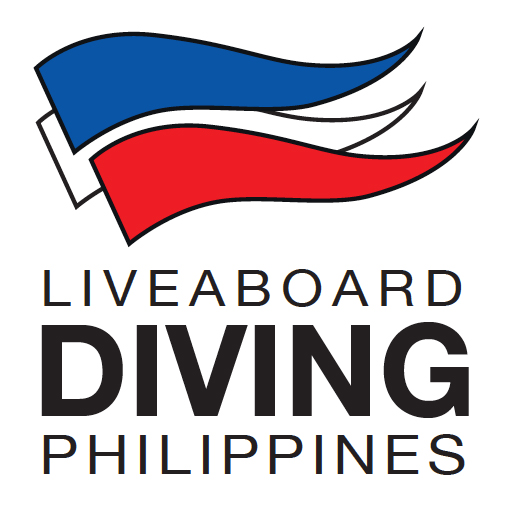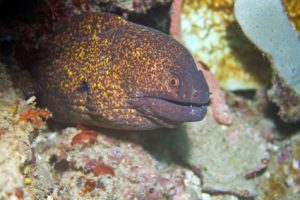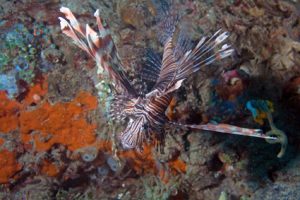Suba Diving in the Philippines
7640 islands, water temperatures that do not fall below 25 degrees Celsius all year round and almost 37,000 km of coastline are the foundation for Suba Diving in the Philippines.
In recent years, the Philippines, which has been a secret tip among divers, have become firmly established in the offerings of the diving travel providers.
It is not always easy to decide where Suba Diving in the Philippines is most appropriate. Wreck diving, big fish, macro diving or floating in the wonderful coral gardens all these possibilities are offered by the waters around the islands of the Philippines.
Often, in recent years, I have found that divers who travel from very far away did not know the size of the Philippines ahead of their journey.
This leads to many dive days being lost due to incorrect travel planning.
Here is the example below:
The combination of diving in Puerto Galera with subsequent exploration of the Japanese wrecks in Coron Bay sounds like a very worthwhile combination of a dive trip for every diver.
The devil is here but as so often in detail, both dive sites belong to the Luzon archipelago but are on different islands (Puerto Galera on Mindoro, Coron Bay on Palawan). On a map is quickly researched that the distance between the two places is only 210 km. In reality, unfortunately, it looks like there is no secure cross-connection between the islands. The only means of transport is an inland flight from Manila to Coron or Puerto Princesa.
In our example, we assume that Puerto Galera is the first stop on this journey. So if we want to move from Puerto Galera to Coron we need about half a day to get to the airport in Manila to catch the flight to Coron or Puerto Princesa. Including the 24hr dive ban prior to a flight, these are two days diving that we miss when switching between destinations. If we add the day’s dive ban before our day of departure, this already results in three days of our dive vacation on which we cannot dive.
I would like to give below a summary of my experiences and impressions from the respective regions, which should help you to find the right dive site or the right combination of dive sites for your individual interests.
I am also happy to provide personal advice. Send an e-mail to info@liveaboard-diving-philippines.com and I will look at how and if I can help you.
The Philippines
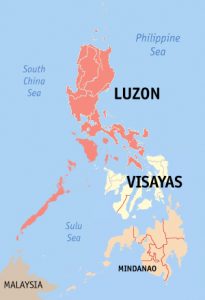 With a population of 103 million and a total area of 343 km², the Philippines is the fifth largest island nation in the world. The islands extend from north to south over a distance of 1850 kilometer and a width from west to east of over 1250 kilometers.
With a population of 103 million and a total area of 343 km², the Philippines is the fifth largest island nation in the world. The islands extend from north to south over a distance of 1850 kilometer and a width from west to east of over 1250 kilometers.
The Philippines are generally divided into three major regions (island groups):
- In the north and west, this is the Luzon Islands, with the islands of Luzon, Masbate, Mindoro and Palawan.
- In the middle of the island state is the Visayas archipelago, with the islands of Panay, Negros, Cebu, Leyte, Samar and Bohol.
- the southernmost archipelago is Mindanao, which is made up of Mindanao Island, Basilan Island and the Sulu Archipelago with Jolo Island.
Almost 99% of all intercontinental flights land at the two largest airports in the Philippines, Manila or Cebu. From there, the domestic flights start on the respective holiday island. Unfortunately, there are very few direct connections between the islands so that in case of a change of islands often the detour via Manila has to be taken to reach your destination for Suba Diving in the Philippines.
Dive Sites in the Philippines
In the list of dive sites, I lean on the previously described division into island groups and start in the north with the island group Luzon.
Diving in Luzon
Luzon is the largest and at the same time the main island of the Philippines. In the south of the island is the capital of the Philippines, Manila. After landing in Manila the direct transfer from the airport to the dive sites on Luzon or via a connecting flight to your holiday island takes place. If you choose to dive in Luzon, most of the resorts and dive centers offer pick up from the airport with transfer to the resort.
Anilao
Located in southwest Luzon just three hours drive from Manila, Anilao is the Mecca for macro photographers and is often referred as the birthplace of all diving activities in the Philippines.
Subic Bay
 Anyone who has declared wreck diving as his favorite will find everything he wants in Subic Bay. Only 2.5 hours northwest ofManila, Subic Bay is home to many of the dive sites and wrecks just a few hundred yards from the shore. For example, USS New York, Oryoku Maru and Seian Maru are within 500 meters of each other.
Anyone who has declared wreck diving as his favorite will find everything he wants in Subic Bay. Only 2.5 hours northwest ofManila, Subic Bay is home to many of the dive sites and wrecks just a few hundred yards from the shore. For example, USS New York, Oryoku Maru and Seian Maru are within 500 meters of each other.
Many of the wrecks are easy for advanced divers to dive. The El Capitan also offers divers without special wreck diving training the possibility to safely explore the interior of the ship.
Puerto Galera / Sabang
If you are more interested in a mix of nightlife and diving then the selection Puerto Galeras / Sabang is the right location. Only three hours from Manila Airport is Batangas, the ferry port with connections to Puerto Galera and Sabang. The crossing from Batangas to Sabang or Puerto Galera takes about one hour.
Puerto Galera and Sabang are already on the island of Mindoro and offer breathtaking dive spots along the east coast. During the day photo shoot with an incredible number of microorganisms under water mixed with pronounced nightlife in the evening and night are the flagship of this region.
Snorkeling with whale sharks in Donsol
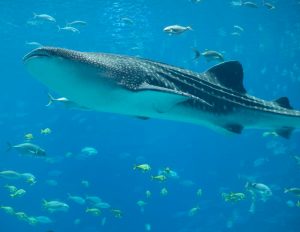 If your travel time is between February and May you should take a tour to Donsol and take the opportunity with whale sharks to snorkeling. During the months of March and April these beautiful animals are almost guaranteed. The small town of Donsol is located on the southern tip of Luzon and is best reached by air from Manila to Legaspi. From there, the one-hour transfer to Donsol takes place.
If your travel time is between February and May you should take a tour to Donsol and take the opportunity with whale sharks to snorkeling. During the months of March and April these beautiful animals are almost guaranteed. The small town of Donsol is located on the southern tip of Luzon and is best reached by air from Manila to Legaspi. From there, the one-hour transfer to Donsol takes place.
Advance booking is advised as local regulations only allow a certain number of boats and snorkelers.
At this point, I finish the first part of my series Suba Diving in the Philippines and look forward to your comments and additions. I will soon be following part two of my series Suba Diving in the Philippines where I will give you some information about the dive sites on Palawan. In the third part of this series I report from the Visayas. But I am not sure if I can handle the entire dive sites of the Visayas in only article or if I have to divide it.
With big fins blow from the Philippines
Your Dirk
 简体中文
简体中文 English
English Deutsch
Deutsch